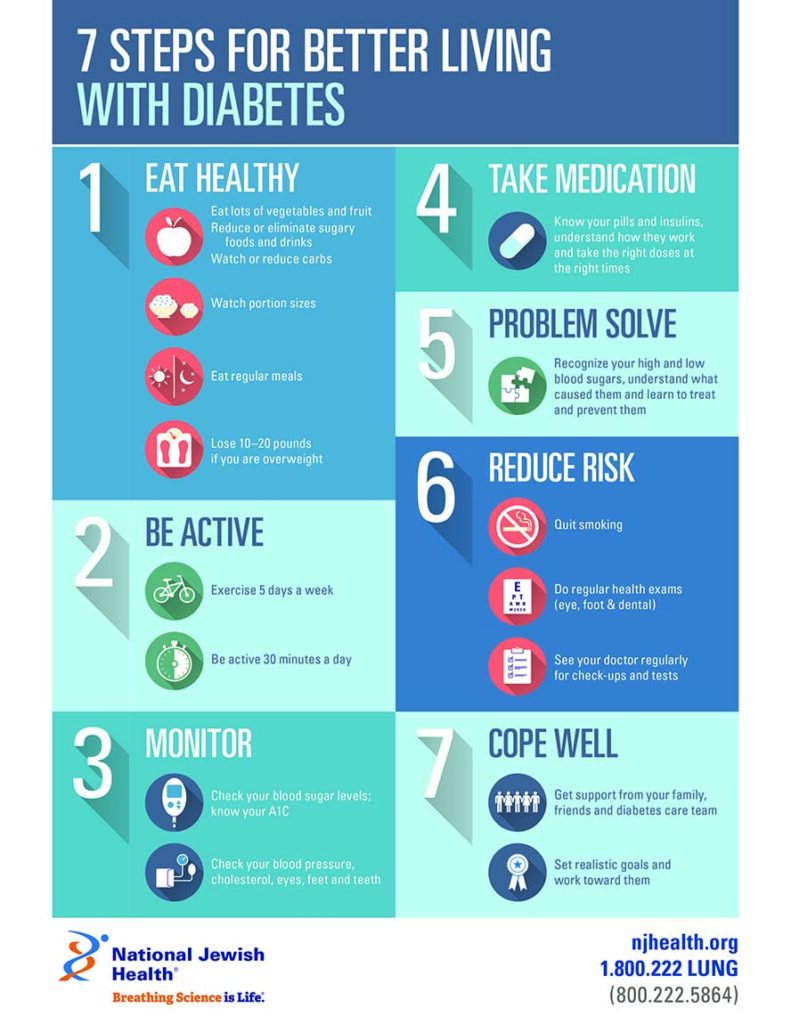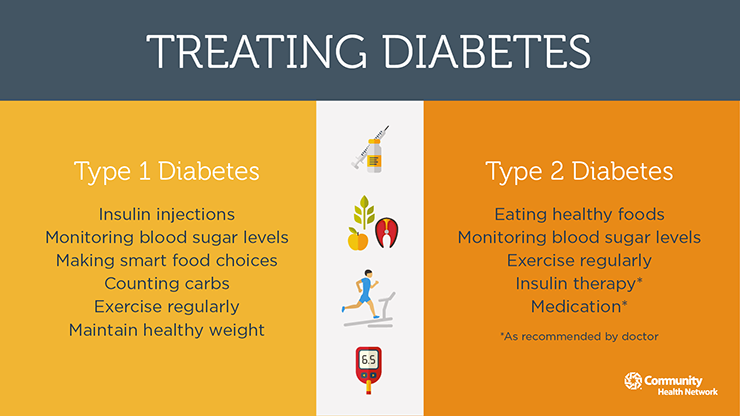In today’s fast-paced and increasingly sedentary society, the prevalence of juvenile diabetes is on the rise. However, by taking proactive steps towards a healthy lifestyle, you can significantly reduce the risk of developing this chronic condition. From making mindful food choices to prioritizing physical activity, this article explores practical tips and strategies to prevent juvenile diabetes and ensure a happy and fulfilling life for you and your loved ones. So, let’s delve into the world of healthy living and empower ourselves with the knowledge needed to ward off this disease.
Preventing Juvenile Diabetes: Steps for a Healthy Lifestyle
Juvenile diabetes, also known as type 1 diabetes, is a chronic condition that affects children and adolescents. It is characterized by the inability of the body to produce insulin, a hormone necessary for regulating blood sugar levels. While the exact cause of juvenile diabetes is still unknown, there are certain risk factors that increase the likelihood of developing the condition. However, by adopting a healthy lifestyle and making certain lifestyle choices, you can significantly reduce the risk of developing juvenile diabetes and promote overall health and well-being.

Understanding Juvenile Diabetes
Juvenile diabetes is a lifelong autoimmune condition that typically develops in childhood or adolescence. It occurs when the immune system mistakenly attacks and destroys the insulin-producing cells in the pancreas. There are two main types of juvenile diabetes: type 1 and type 2. Type 1 diabetes is more common in children and is characterized by the body’s inability to produce insulin. On the other hand, type 2 diabetes, which used to be known as adult-onset diabetes, is typically associated with overweight or obesity and occurs when the body becomes resistant to the effects of insulin.
Risk Factors for Juvenile Diabetes
While the exact cause of juvenile diabetes is unknown, several risk factors have been identified that may increase the likelihood of developing the condition. These risk factors include:
Family History
Having a close relative, such as a parent or sibling, with type 1 diabetes increases the risk of developing the condition. However, the majority of people with a family history of diabetes do not develop the disease.
Genetics and Autoimmune Disorders
Certain genes and autoimmune disorders may play a role in the development of juvenile diabetes. Researchers believe that a combination of genetic and environmental factors triggers the autoimmune response that leads to the destruction of insulin-producing cells.
Exposure to Certain Viruses
Some studies suggest that exposure to certain viruses, such as enteroviruses, may increase the risk of developing juvenile diabetes. However, more research is needed to determine the exact connection between viral infections and the development of the disease.
Environmental Factors
Environmental factors, such as early diet and exposure to certain chemicals, may also play a role in the development of juvenile diabetes. However, more research is needed to fully understand the impact of these factors.
Age and Ethnicity
Juvenile diabetes can occur at any age, but it is most commonly diagnosed in childhood or adolescence. Certain ethnic groups, such as people of Scandinavian or Finnish descent, have a higher incidence of the disease.

Importance of a Healthy Lifestyle
Maintaining a healthy lifestyle is crucial in reducing the risk of developing juvenile diabetes and promoting overall health and well-being. A healthy lifestyle not only helps prevent the onset of diabetes but also improves overall quality of life. By adopting healthy habits, you can significantly reduce the risk of developing juvenile diabetes, manage blood sugar levels, and prevent complications associated with the disease.
Regular Physical Activity
Regular physical activity is essential for maintaining a healthy lifestyle and reducing the risk of developing juvenile diabetes. Engaging in regular exercise helps control blood sugar levels, improve insulin sensitivity, and maintain a healthy weight. According to the American Diabetes Association, children and adolescents should engage in at least 60 minutes of moderate to vigorous physical activity every day. Some examples of physical activities suitable for children and adolescents include walking, running, biking, swimming, and playing team sports.

Nutritious Diet
A nutritious diet is a cornerstone of a healthy lifestyle and plays a vital role in preventing juvenile diabetes. A balanced diet that includes a variety of nutrient-rich foods helps regulate blood sugar levels, maintain a healthy weight, and provide essential nutrients for overall growth and development. A healthy diet should consist of whole grains, lean proteins, fruits, vegetables, and healthy fats.
Maintaining a Healthy Weight
Maintaining a healthy weight is crucial in reducing the risk of developing juvenile diabetes. Obesity and excess weight increase the risk of developing type 2 diabetes and can also contribute to insulin resistance in type 1 diabetes. Body Mass Index (BMI) is a measure used to assess whether a person has a healthy weight for their height. Children and adolescents should strive to maintain a BMI within the healthy range.

Avoiding Sugary Beverages
Sugary beverages, such as soda, fruit juices, and energy drinks, contribute to weight gain and increase the risk of developing juvenile diabetes. These beverages are high in added sugars and calories, and their consumption can lead to insulin resistance and other metabolic disorders. It is important to replace sugary beverages with healthier alternatives like water, unsweetened tea, or diluted fruit juices.
Limiting Processed Foods
Processed foods are often high in unhealthy fats, added sugars, and sodium, and their consumption should be limited to reduce the risk of juvenile diabetes. Instead, it is recommended to choose whole foods and fresh ingredients when preparing meals. Processed snacks, fast food, and pre-packaged meals should be minimized or avoided altogether, as they are often lacking in essential nutrients and can lead to weight gain and other health issues.

Ensuring Sufficient Sleep
Getting enough sleep is essential for maintaining a healthy lifestyle and reducing the risk of developing juvenile diabetes. Lack of sleep can disrupt the body’s hormonal balance, increase appetite, and lead to weight gain and insulin resistance. Children and adolescents should aim for the recommended amount of sleep for their age group to support overall health and well-being.
Avoiding Tobacco and Alcohol
Tobacco use and excessive alcohol consumption have been linked to an increased risk of developing type 2 diabetes and can also complicate the management of type 1 diabetes. It is important to avoid smoking and limit alcohol intake to promote a healthy lifestyle and reduce the risk of developing juvenile diabetes.
Regular Check-ups and Screening
Regular medical check-ups and screenings are essential for early detection and intervention in the case of juvenile diabetes. Routine check-ups allow healthcare professionals to assess blood sugar levels, monitor overall health, and identify any potential risk factors for the development of the disease. It is important to follow the recommended screening guidelines and seek medical advice if any symptoms or concerns arise.
In conclusion, adopting a healthy lifestyle is crucial in preventing juvenile diabetes and promoting overall health and well-being. Regular physical activity, a nutritious diet, maintaining a healthy weight, avoiding sugary beverages and processed foods, ensuring sufficient sleep, and avoiding tobacco and alcohol are all important steps that can significantly reduce the risk of developing juvenile diabetes. In addition, regular check-ups and screenings allow for early detection and intervention, leading to better management and improved outcomes for those with the disease. By making these lifestyle choices and taking proactive measures, you can significantly reduce the risk of developing juvenile diabetes and live a healthier, happier life.